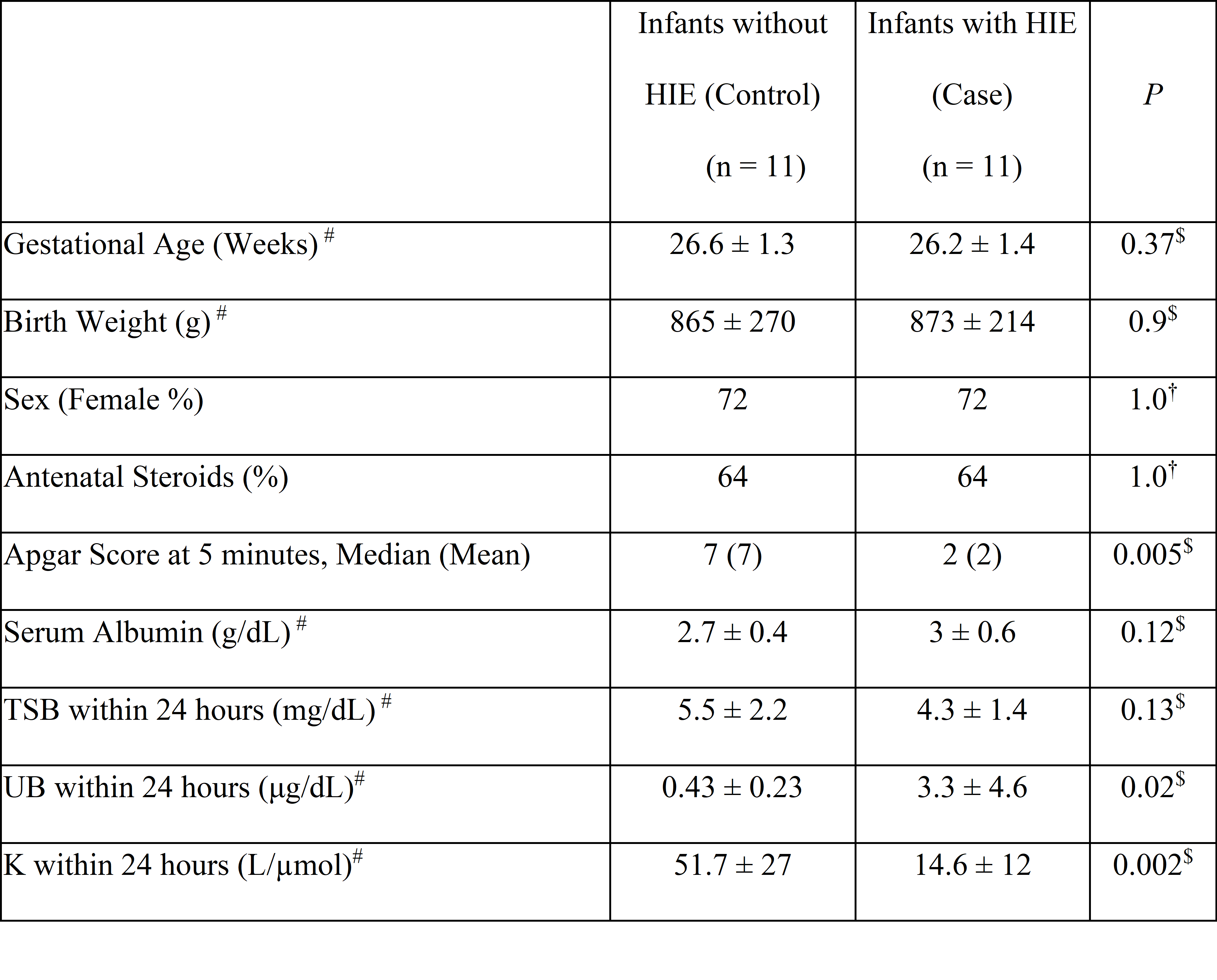Neonatology
Session: Neonatal Neurology 4: Clinical
524 - Hypoxic Ischemic Encephalopathy and Bilirubin Albumin Binding Affinity in Premature Infants
Saturday, May 4, 2024
3:30 PM - 6:00 PM ET
Poster Number: 524
Publication Number: 524.1077
Publication Number: 524.1077
- SA
Sanjiv B. Amin, MD, MS (he/him/his)
Professor
Children’s Hospital of Michigan
Detroit, Michigan, United States
Presenting Author(s)
Background: Hypoxic ischemic encephalopathy (HIE) has been shown to be associated with low bilirubin kernicterus in autopsy studies of premature infants. Furthermore, reserve albumin concentration was shown to decrease in the presence of HIE, suggesting that HIE may be associated with an increase in unbound bilirubin (UB, bilirubin not bound to albumin) concentration. UB, has been associated with bilirubin-induced neurotoxicity in premature infants. UB is determined by serum albumin, total serum bilirubin (TSB), and/or bilirubin albumin binding affinity (K). However, the association of HIE with UB and K has not been well studied using direct measurement of UB.
Objective: To evaluate the association of HIE with K and UB concentration in ≤ 29 weeks gestational age (GA) infants.
Design/Methods: We performed a prospective case control study involving ≤ 29 weeks GA infants. Infants with early-onset sepsis, histologic chorioamnionitis, hemolysis (maternal and infant blood group mismatch with a positive indirect or direct coombs test), hypoxia (PaO2 ≤ 45 mm Hg) during the first 24 hours, chromosomal disorders, or conjugated hyperbilirubinemia were excluded. Infants with Apgar score ≤ 3 at 5 minutes and/or cord pH < 7.0 and requiring chest compressions and epinephrine were deemed to have HIE and formed the case group. Each infant in the case group was matched (1:1) on GA and closest birth month with an infant without HIE. TSB and UB were measured using the same aliquot of blood collected within 24 hours after birth. UB was measured by the modified peroxidase method. Serum albumin concentration was measured using the bromocresol green method. The UB, corresponding TSB, and serum albumin were used to calculate K (L/μmol) using the law of mass action equation.
Results: Twenty-six infants were identified with HIE, of which 15 infants met exclusion criteria. A total of 22 infants (11 with HIE and 11 control) were studied. There were no differences in GA, birth weight, sex, and antenatal steroids exposure between the two groups (Table 1). Despite lower TSB and higher serum albumin, the UB was significantly higher among infants with HIE compared to infants without HIE. The K was significantly lower in infants with HIE compared to control infants in the first 24 hours following birth. (Table 1).
Conclusion(s): Our findings suggest that HIE may be associated with a decrease in K and an increase in UB concentration ≤ 29 weeks GA infants. Premature infants with HIE may be at increased risk of bilirubin-induced neurotoxicity compared to infants without HIE.

